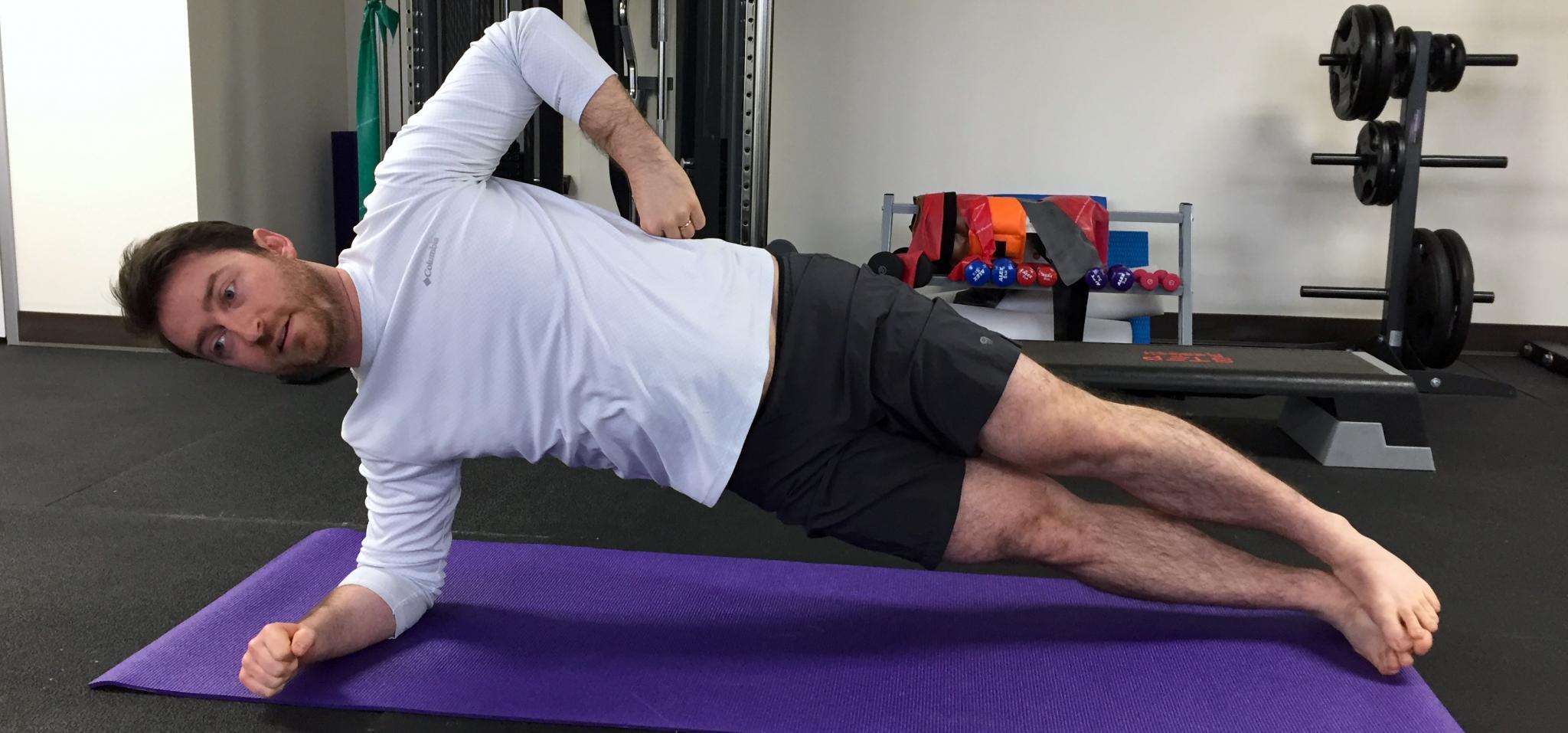For How Long Should I Hold A Plank?

A Look at Exercise Duration in Low Back Pain
Don’t get confused. When we talk about planking we’re not talking about the crazy fad of 2009, but rather the core exercises that consist of holding specific positions for a given time.
Moving on, the argument for exercise is strong. While not everyone exercises, most people acknowledge that exercise should be done for good health. The same can be said about core exercises for low back pain. While there is great debate about the best exercises, most researchers and practitioners can agree that exercise is an important tool in treating, managing, and preventing low back pain. Let’s have a look at what has been explored in research, what might work best in the real world, and why that might work.
A RESEARCH STUDY WITH A WELL-DEFINED DURATION OF CORE EXERCISES FOR LOW BACK PAIN
Below is a program of exercises from a study done looking at who, amongst people with low back pain, would respond to core exercises. The authors of this study include respected low back pain and exercise/treatment experts Julie Fritz and Stuart McGill, amongst others. As you can see, the exercises below are recommended with holds between 4 and 8 seconds.

(Hicks et al., 2005)
While the study referred to above was designed to see who, with low back pain, responded well to core stabilization exercises, they did see that this particular program worked for some. The length of holds in the program above shows both expert opinion and research support the idea of short holds for core stability exercises when addressing lower back injuries.
WHY HOLDING EXERCISES ARE IMPORTANT
Held exercises are recommended. The goal of a held exercise is often considered to be endurance of musculature. Endurance is the resistance to fatigue. Fatigue can lead to less than ideal mechanical movement, which leads to tissue irritation, injury, and pain. If held exercises can increase muscular endurance in those with low back pain (or hoping to prevent low back pain), then we should be able to limit pain.
WHY NOT HOLD EXERCISES FOR LONGER?
A brief lesson in simple muscle chemistry
I am sure that many among you have held planks for 30 seconds, 1 minute, or 2 minutes. However, there may be more value in doing many short holds than doing a few long ones. It is generally accepted that a muscle contraction held for longer than about 7-8 seconds will require an uptick in an extra fuel source. This fuel source is made available by a process called glycolytic oxidation (or sugar metabolism). It is also well accepted that one of the by-products of this process is lactic acid. While lactic acid is converted back to sugar (via a process called gluconeogenesis), some of the effects of these processes can affect muscle function for up to 48 hours. In summary, a hold for less than 7-8 seconds for multiple repetitions may reduce the risk of undesired by-products of muscle metabolism.
PRACTICAL APPLICATIONS
While it is helpful to know how many seconds to hold a plank, not many of us exercise with a stopwatch in hand. If you do, please consider the 8-second rule. If you don’t exercise with a stopwatch in hand, a 10 second count should suffice. We often count a little fast so 10 seconds counting will often get you into a safe range for a held core exercise, when dealing with low back pain.
Core stabilization training is important. There are many ways to do it, and many ways to approach it. It is important that we consider both evidence and risk when designing an exercise program. Please remember, if you have any questions about this topic, a rehabilitation professional (like the ones here at Inovo Medical) can give you more in-depth answers and personalized instructions to help you get the most out of your treatment and plan for back pain and other injuries.
Written by Dr Ben Matheson
Hicks, G. E., Fritz, J. M., Delitto, A., & McGill, S. M. (2005). Preliminary development of a clinical prediction rule for determining which patients with low back pain will respond to a stabilization exercise program. Archives of physical medicine and rehabilitation, 86(9), 1753-1762

Mathieu Bélanger, MD, CCFP, CPSO Recognized Specialist (Chronic Pain), is the founder and President of Inovo Medical. Dr. Bélanger began his academic career by earning an undergraduate degree in kinesiology (i.e., the science of body mechanics) before enrolling in medicine at the University of Montréal. He is particularly interested in pain related to sports injuries and musculo-skeletal disorders. This interest led him to travel extensively for various types of training on pain treatment given by leading experts. Since then, his objective has been to play an active role in the development and delivery of the most sophisticated and effective treatments for chronic pain.

